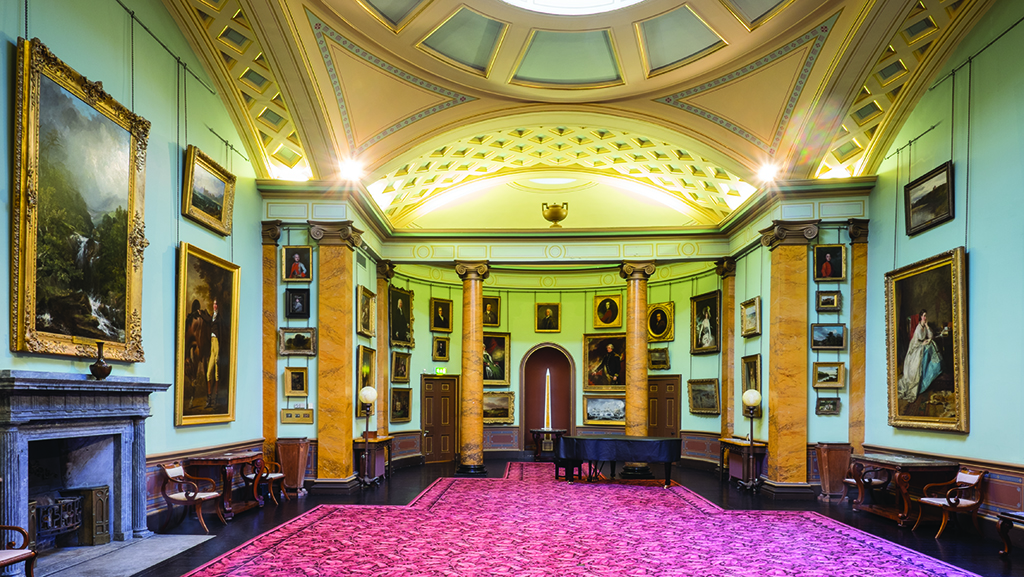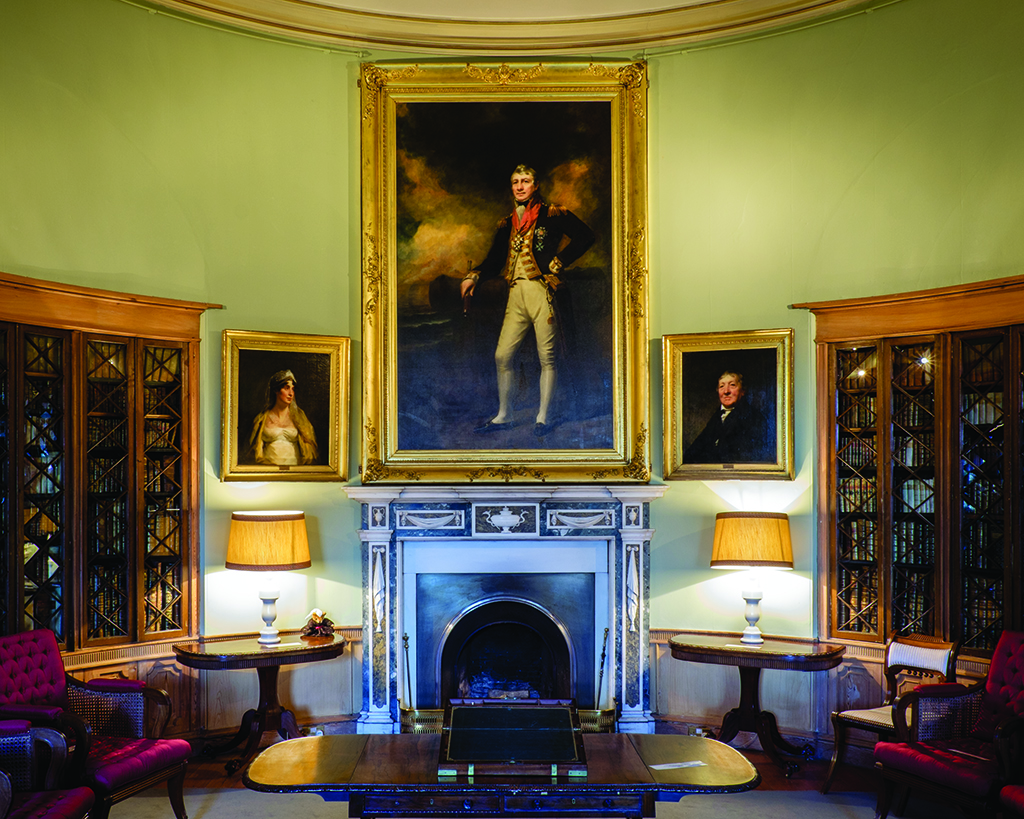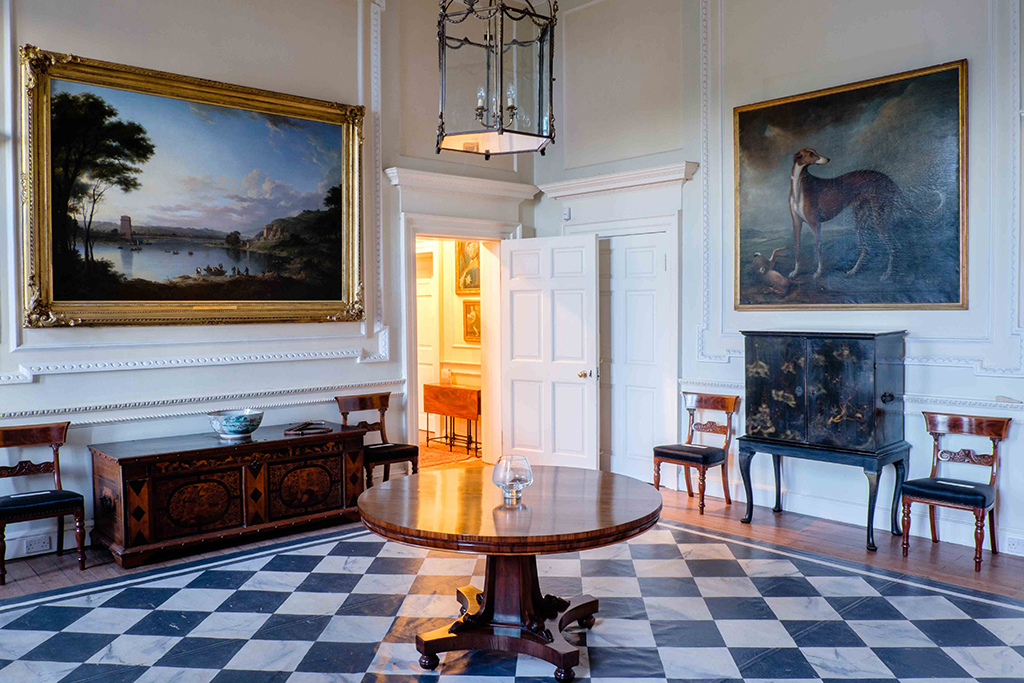
The love story that produced beautiful Paxton House
Unusually for Scotland, Paxton House, situated on the banks of the meandering River Tweed in Berwickshire, has its origins in a love story.
It began when Patrick Home met and fell in love with Prussian heiress Sophie de Brandt whilst at Leipzig University in 1750, and continued when, being affable and charming, he eased his way into the court of Frederick the Great to court her.
That alone was quite an achievement for a 22-year-old from the Borders of Scotland. The idea of marriage between Patrick and Sophie was not initially approved, except on condition that the couple settle in Germany, although Patrick’s strong-minded mother opposed the idea outright.
As a consequence, he went on a grand tour of Italy but with Sophie, who had given him a ring and a pair of gloves as a token of her esteem, very much on his mind.

The great picture gallery at Paxton House features paintings on loan from the National Gallery of Scotland (Photo: Malcolm MacGregor)
Patrick had to return to Scotland on receiving the news that his mother had been murdered by the butler, and it was while back in the Borders that the idea of Paxton, which was to be built for his intended bride, took hold and then became a reality.
If the story has a fairytale beginning, the end is less romantic: they were never to meet again and the only evidence of her presence at Paxton is the pair of gloves, which are displayed in the Morning Room.
Patrick was never to marry, despite beginning work on Paxton in 1758, with completion in 1763. A distraught Patrick decided to sell Paxton to his cousin, Ninian Home, in 1773. Ninian commissioned the most stylish furniture maker of the day, Thomas Chippendale, to furnish and decorate the house. With Ninian travelling extensively to the West Indies, he left the interior design of the house in the capable hands of Mr Chippendale, with the result that Paxton possesses one of the most important collections of Chippendale furniture in the country.
About 50 Chippendale items, from the original 106 created for the house, are on display. Chippendale’s role cannot be underestimated – all the major pieces of furniture were created in his workshops, and he was responsible for much of the wallpapering and chair covers. He was given a free hand and his exquisitely designed furniture can be seen throughout the house.

The library in the East Wing of Paxton House (Photo: Malcolm MacGregor)
Furthermore, there cannot have been a more unique working partnership than that of Chippendale and the Adam brothers, John and James, who designed the house. Their father was William Adam, who had designed Hopetoun House near Edinburgh and Duff House in Banffshire.
Architecture – which principally meant the Neo-Palladian style inspired by Andrea Palladio of Rome – was in their blood, with colonnades, porticos and grand steps with wide frontages their trademarks.
Neo-Palladianism fitted nicely with the dominant cultural and intellectual movement of the day, the Scottish Enlightenment.
In many ways Paxton was symbolic of this movement. The building and development of the house brought together in one location some of the greatest names of the Enlightenment. In addition to Chippendale and the Adam brothers, the construction of the house was overseen by James Nisbet, the period’s master mason.
Later on, Miss Jean Home, who was to inherit the house and paintings, enlisted the help of Robert Reid, the King’s architect and surveyor for Scotland, who in 1812 designed and built the East Wing, which houses the library and great picture gallery.
Although the pictures it once held have been dispersed, it now houses a fine collection of paintings on loan from the National Gallery of Scotland.
The Chippendale furniture collection was enhanced with items designed by William Trotter, the celebrated Edinburgh cabinet-maker, while the walls were hung with paintings from the greatest Scottish artists of the day, including Sir Henry Raeburn, Allan Ramsay, Alexander Nasmyth and his daughter Charlotte. Latterly, that collection was augmented by additions from the pre-Raphaelite Sir John Millais. Sir Walter Scott was of course prominent, visiting on many occasions.
The house itself was not designed to be overawing, but more inviting with a sense of serenity and balance. The rooms are airy and well lit by natural light, while any visitor will be aware of the sense of space and symmetry in the placing of furniture and paintings.

Paxton House was designed with a sense of serenity and balance (Photo: Malcolm MacGregor)
The dining room, for example, has an ambience of understated quality with a pure mix of Chippendale and Adam, rounded off by the display of Hiroshima china on the table.
Paxton was associated with soldiers, sailors, adventurers, empire builders and politicians, but it was always very much a family home, and even Richard Gale’s portrait of John Home Robertson and his wife Catherine has a relaxed and welcoming feel to it.
A socialist politician who added ‘Home’ to his name when he married Helen Milne-Home, the eldest daughter and heiress to Paxton’s owner David Milne-Home, Home Robertson was a Labour MP for Berwick and East Lothian until 2001, and MSP for East Lothian until 2007, bringing politics back to a house which was built by a Jacobite family. It was Home Robertson who set up the Paxton Trust in 1988, giving the house to the nation.
Any tour of the house is delightful, until one comes across the Flodden Banner of 1513, which is still used as a shroud to cover the bodies of the then laird and his eldest son, who were both killed at the battle. It is a poignant reminder of those dark days before the union of crowns, where the ground of Paxton, sitting high above the Tweed, would have been fought over by the Scottish and English raiding parties known as reivers.
But time has moved on and now, in the middle of what was once a war zone, the magnificent Paxton House is a lasting testament to the Homes and their contribution to Scotland’s culture, history and politics.
This feature was first published in 2016.
TAGS

